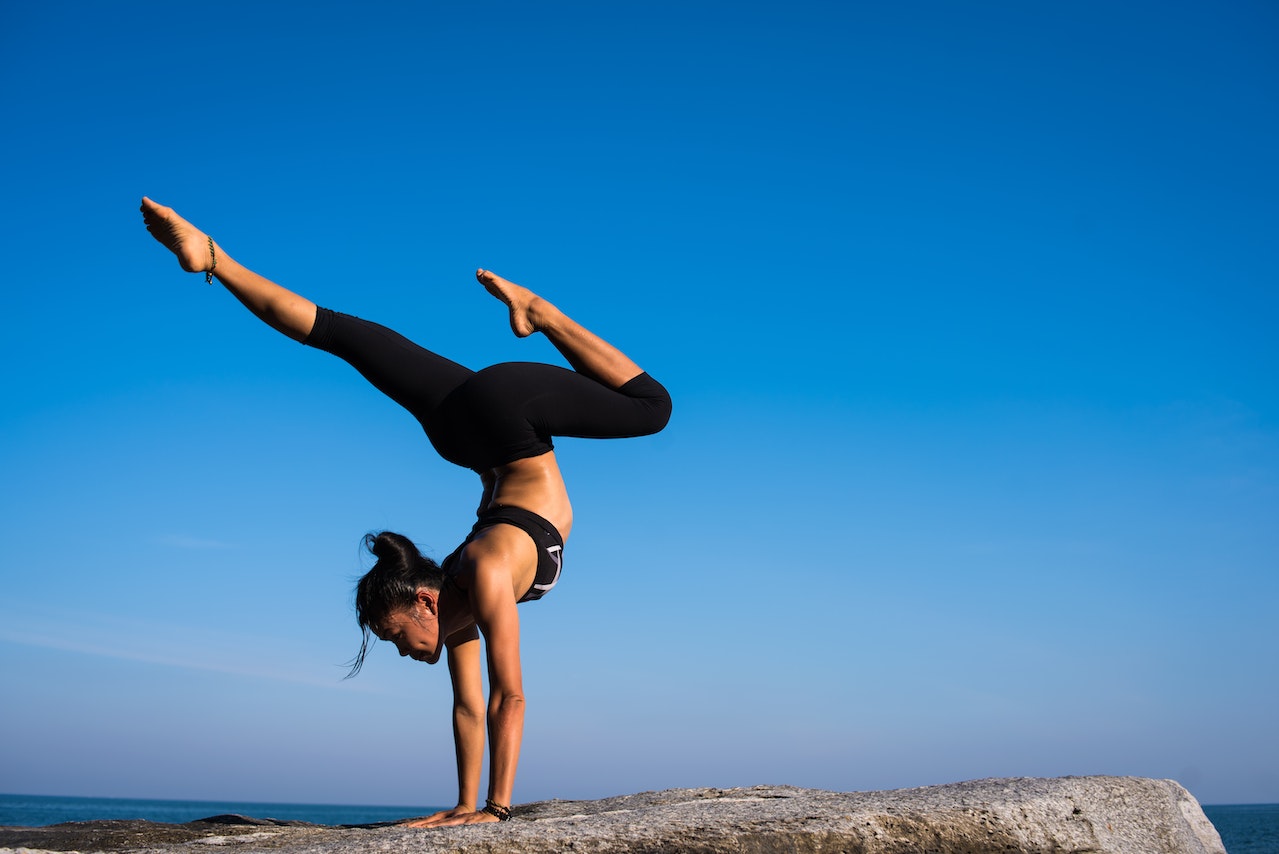How To Improve Your Balance For Better Health - Tips To Improve
In this article, we will discuss how to improve your balance for better health. Having good balance is important for daily activities like walking, standing, and even exercising. Poor balance can lead to falls, injuries, and other health issues. However, balance is a skill that can be improved with practice and specific exercises.
Author:James PierceReviewer:Karan EmeryMar 14, 20230 Shares110 Views

In this article, we will discuss how to improve your balance for better health. Having good balance is important for daily activities like walking, standing, and even exercising.
Poor balance can lead to falls, injuries, and other health issues. However, balance is a skill that can be improved with practice and specific exercises.
The Benefits Of Good - How To Improve Yours Health
Having good balance is essential for our daily activities, whether we are walking, running, or even standing still.
Good balance not only prevents us from falling but also helps us maintain a proper posture, reduces the risk of injuries, and improves our overall health. We will discuss the benefits of good balance and provide you with practical tips on how to improve yours.
Benefits Of Good Balance
- Falls are a major concern for older adults and can cause serious injuries, including hip fractures and head trauma. According to the Centers for Disease Control and Prevention (CDC), falls are the leading cause of fatal and nonfatal injuries among older Americans. Good balance can reduce the risk of falls by improving stability and body control.
- Good balance also improves posture by helping us maintain an upright position. When we have good balance, our body weight is distributed evenly, reducing stress on our joints and muscles. Good posture not only looks better but also reduces the risk of back pain and other musculoskeletal problems.
- Good balance is crucial for athletes and can improve their performance in various sports, such as gymnastics, dance, and martial arts. Athletes with good balance can maintain proper form and technique, which can lead to better results and reduced risk of injuries.
Tips On How To Improve Your Balance
- Balance exercises can help you improve your stability and body control. Simple exercises, such as standing on one leg or walking heel to toe, can be effective in improving your balance. Yoga and Pilates are also excellent ways to improve your balance and posture.
- Your core muscles, including your abs and lower back, play a crucial role in maintaining good balance. Strengthening your core can improve your posture and stability, reducing the risk of falls and injuries. Planks, crunches, and back extensions are excellent exercises for strengthening your core.
- Flexibility is essential for good balance, as it allows your body to move freely and respond to changes in position. Stretching exercises, such as toe touches and quad stretches, can improve your flexibility and balance.
How To Improve Your Balance For Better Health - A Complete Guide
Balance is a critical aspect of physical health that can significantly affect the quality of life. A good sense of balance helps maintain proper posture, prevent falls and injuries, and enable us to carry out daily activities with ease.
Unfortunately, as we age, our balance can deteriorate, making us more vulnerable to falls and other health issues.
However, the good news is that it is never too late to improve your balance. In this complete guide, we will provide practical tips and exercises to help you improve your balance for better health.
Understand Your Balance System
Before embarking on any balance improvement program, it is essential to understand how your balance system works.
The balance system includes three main components: the vestibular system, the visual system, and the somatosensory system.
The vestibular system, located in the inner ear, detects changes in head movement and provides input to the brain to help maintain balance.
The visual system helps to perceive motion, depth, and orientation, while the somatosensory system provides feedback on pressure, joint position, and movement.
Practice Balance Exercises
Balance exercises can help improve your stability and body control. Start with simple exercises such as standing on one leg, heel-to-toe walk, or standing on a wobble board or other unstable surfaces.
Incorporate these exercises into your daily routine and gradually increase the difficulty level as your balance improves.
Focus On Core Strength
Your core muscles play a crucial role in maintaining good balance. A strong core helps stabilize the spine, pelvis, and hips, allowing for better balance and posture. Incorporate core exercises such as planks, crunches, and back extensions into your workout routine to strengthen these muscles.
Improve Flexibility
Flexibility is essential for good balance, as it allows your body to move freely and respond to changes in position. Incorporate stretching exercises into your routine, such as hamstring stretches, quad stretches, and toe touches, to improve your flexibility and balance.
Challenge Yourself
Challenging your balance is an effective way to improve your skills and prevent stagnation. As you progress, try performing balance exercises on an unstable surface, incorporate dynamic movements such as lunges and squats, or try yoga and Pilates to further challenge your balance.
Incorporate Balance Into Daily Life
Incorporating balance into your daily life is an effective way to improve your balance and prevent falls. Simple activities like standing on one leg while brushing your teeth or cooking can help improve your balance over time.
Work On Sensory Input
Sensory input is a vital component of good balance. Practicing balance exercises with your eyes closed, or standing on a soft surface, can help improve your sensory input, which will, in turn, improve your balance.
Address Any Medical Issues
Certain medical conditions, such as inner ear disorders, can affect your balance. If you are experiencing issues with balance, it is important to consult a healthcare professional to determine the underlying cause and receive appropriate treatment.
Maintain A Healthy Lifestyle
Maintaining a healthy lifestyle, including proper nutrition and regular exercise, can help improve your balance and overall health.
Avoiding alcohol and tobacco and maintaining a healthy weight can also contribute to better balance and reduce the risk of falls and other health issues.

2 Ways to Improve Your Balance and Stability (And Have Fun Doing It)
How To Incorporate Balance Training Into Your Fitness Routine
Incorporating balance training into your fitness routine can be an effective way to improve your stability, prevent falls, and enhance your overall physical performance. Here are some practical tips on how to incorporate balance training into your fitness routine:
Warm-Up With Balance Exercises
Start your workout with balance exercises to warm up and activate the muscles involved in maintaining balance. For example, you can start with a few minutes of standing on one leg or performing simple balance poses such as the tree pose or the warrior III pose.
Incorporate Balance Equipment
Using balance equipment such as stability balls, wobble boards, or balance discs can add variety to your workout and challenge your balance further. You can use these tools for exercises such as squats, lunges, or single-leg deadlifts.
Integrate Balance Into Strength Training
Incorporating balance into your strength training routine can improve your body control and prevent injuries.
For example, performing a bicep curl while standing on one leg or doing a shoulder press on an unstable surface can help improve your balance and strength simultaneously.
Try Yoga And Pilates
Yoga and Pilates are excellent forms of exercise that can improve your balance, flexibility, and core strength.
These practices involve various balance poses that can challenge your body in different ways, making them an effective way to incorporate balance training into your fitness routine.
Perform Dynamic Movements
Dynamic movements such as jumping, hopping, or skipping can also challenge your balance and improve your agility. Incorporate these movements into your routine, but start with low-intensity variations and gradually increase the intensity as your balance improves.
People Also Ask
How Can I Improve My Balance As I Age?
As you age, it's important to incorporate exercises that challenge your balance, such as standing on one foot or using balance equipment like a stability ball or wobble board. Yoga and Tai Chi can also be effective.
What Are The Benefits Of Improving Balance?
Improved balance can help prevent falls and injuries, increase agility and coordination, and enhance overall physical performance.
Can Poor Balance Be Improved?
Yes, poor balance can be improved with regular practice of balance exercises, strength training, and other physical activities that challenge your stability.
What Are Some Easy Balance Exercises To Do At Home?
Easy balance exercises that can be done at home include standing on one foot, heel-to-toe walking, and single-leg squats. Using a stability ball or wobble board can also add variety to your home workout routine.
Conclusion
Hope you all understand how to improve your balance for better health. Improving your balance is essential for better health, especially as we age.
With regular practice of balance exercises and incorporating balance training into your fitness routine, you can improve your stability and reduce your risk of falls and injuries.
Remember to consult with your doctor or physical therapist before starting any new exercise program. So, start practicing these balance exercises today and enjoy a healthier, safer life!

James Pierce
Author

Karan Emery
Reviewer
Latest Articles
Popular Articles
